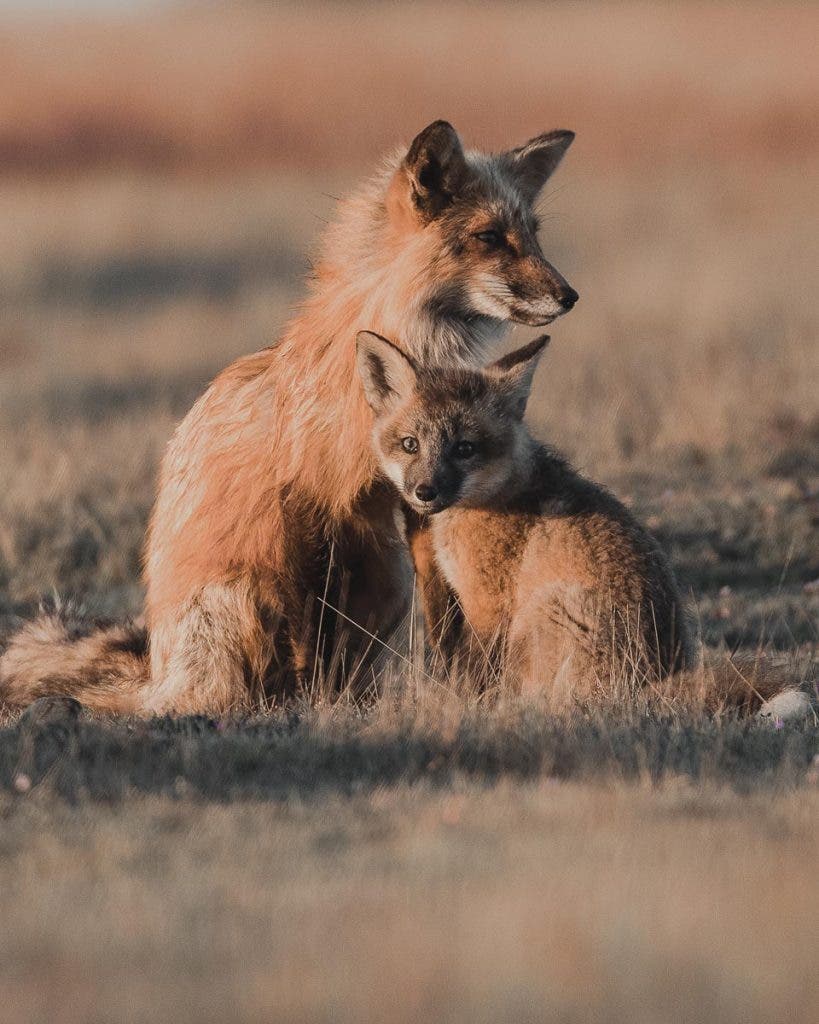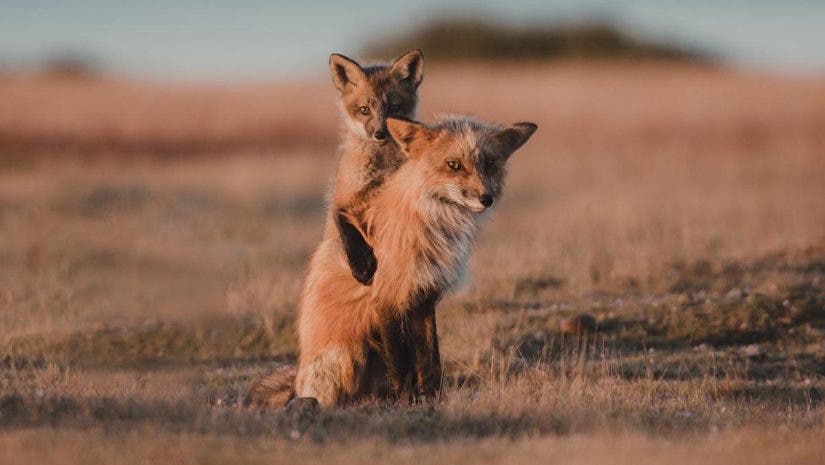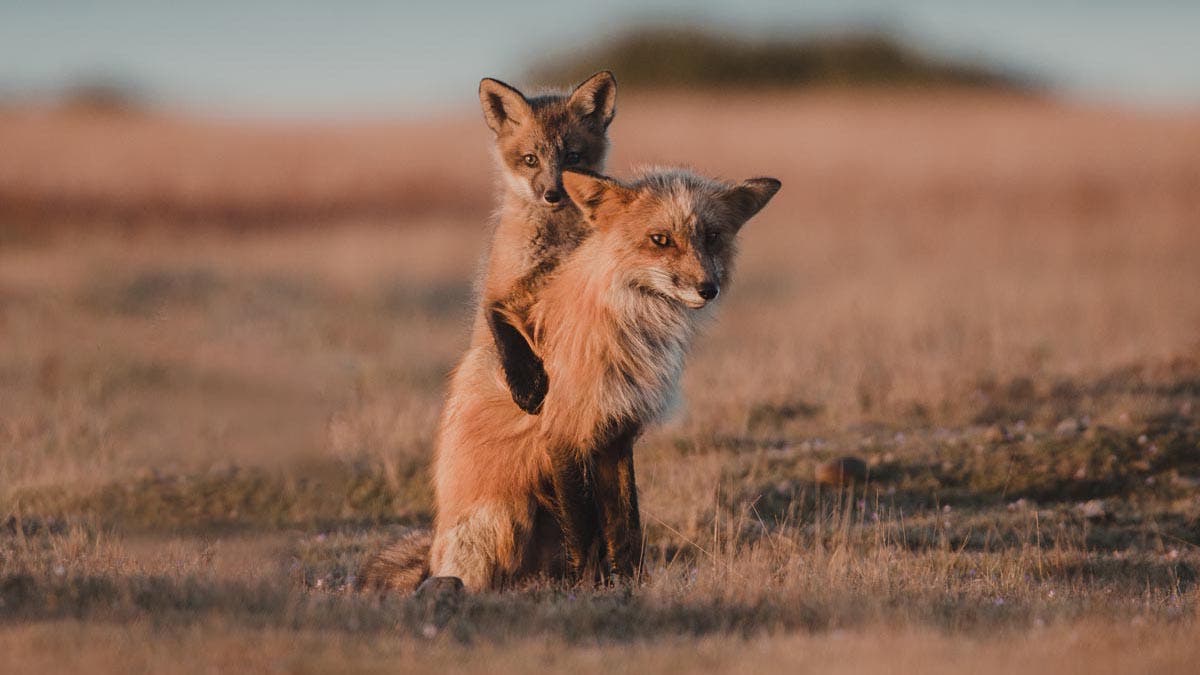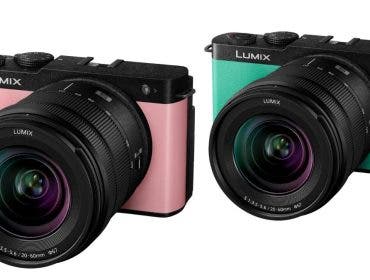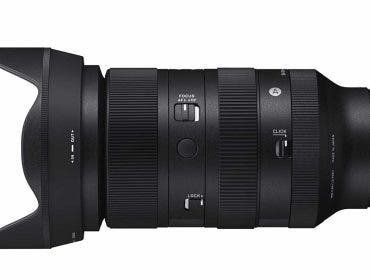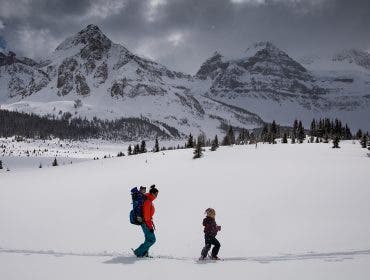While on a recent trip back home to see my family, I was taken aback by the inimitable natural beauty of the incredible landscapes. We made our way through the native evergreen forests. Eventually, they gave way to the verdant and lush brush prairies. Then, a slightly unsettling scene revealed itself. An absolute horde of photographers was concentrated around the base of one of the local landmarks. We soon found out that all this was to photograph foxes.
We are familiar with seeing locals and visitors strolling around with cameras documenting nature and wildlife. However, this was something different and all too familiar to the area in the Instagram era. They were crowding around to see, some with mobile benches and chairs, the comings and goings of a family of Red Foxes with a pack of newborn kits in tow.
I know this amount of access to wildlife is creatively enticing. However, this type of invasive behavior and habitat incursion by photographers and wildlife “observers” is precisely what shut down another beloved location down the road. Let’s get something out of the way: this isn’t an article about Leave No Trace, gatekeeping locations, or a referendum on the downstream effects of tourism and travel post-COVID. I hope to impart a more localized bit of information. Let’s dive into the best creative practices if you are in a similar situation. That way, you can employ your equipment and some common sense to photograph foxes responsibly and get the shot you dreamed of!
To Photograph Foxes, First, You Must Take a Step Back
One of the most basic and inherently important aspects of wildlife photography is maintaining a safe distance from the animals you are photographing. This is where the tenet of common sense comes into play. It is especially imperative regarding the animal’s safety and welfare. Of course, this should always be the primary care and concern in these endeavors.
Creatively speaking, you’d love to avoid disrupting the natural behavior of the wildlife and their interactions with the local habitat. That way you can capture that dynamic moment that feels genuine to the scene and setting. Stressing the animal for a photo will always yield less than ideal results. This can lead to erratic, unnatural, and defensive posturing, which both parties would ultimately love to avoid.
While on the topic of maintaining a safe distance and responsible approach, the issue of habitat management is of equal importance during these creative pursuits. The temptation to bound through the scene in an unmitigated fashion, chasing the perfect composition, is a completely understandable feeling that most creatives can relate to. The realities of doing so can devastate a delicately balanced environment these animals depend on for protection and shelter.
You can most capably achieve this by sticking to designated walking and hiking trails. These are separate from the unmaintained game trails. Indeed, they are designed to allow maximum recreation with minimal impact on the surroundings. If you must step off the trail, avoid trampling plants and mosses. These are the unsung heroes of the microhabitats. Now that we’ve covered the basics and best practices for minimizing your impact while photographing wildlife let’s get into the fun part, how to approach and procure the creative assets!
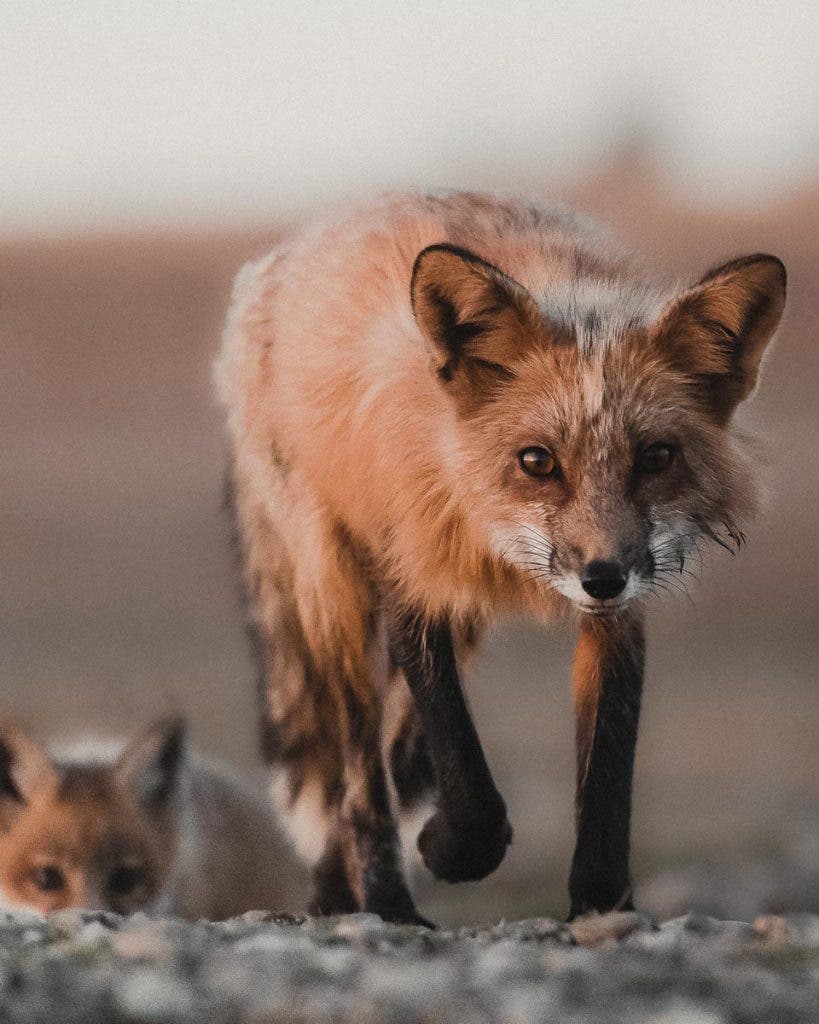
An Elusive Subject
One of the most challenging aspects of getting a great photo of a Red Fox is actually finding a Red Fox to photograph. They tend to be notoriously cautious and hyper-intelligent, making them a unique challenge to spot and document. If you find yourself unfamiliar with the locations of their dens and nesting practices, observing a Fox in the wild can be a frustrating and fruitless endeavor. However, understanding their preferred environments and activity patterns will certainly help dial in your pre-production in regards to location scouting and shooting schedule.
For instance, it took me the better part of a year to locate the family of Foxes that you see in this article. I only did after finally consulting with the local wildlife authority and volunteers local to the area. They advised me of the behaviors to look for. This would indicate whether the animal felt comfortable or threatened. As well as how to manage the myriad interactions in the best way possible. Once I had figured out where the Fox dens were and when they were most active, it was up to me to figure out the most responsible creative approach that would hopefully yield the best results. I managed to be successful in this through a combination of telephoto lenses and converters, as well as an understanding of how I might crop the images further in post-production.
The Right Gear to Photograph Foxes
For wildlife photography, and especially in regard to foxes, a good telephoto lens is the baseline minimum. Really, it is an absolute must-have if you hope to achieve detailed results. A focal range of 300mm to 600mm seems to be the ideal balance. This keeps you well away from the animals while still allowing you to focus on the eyes. Of course, you will also be able to capture any other detail that might interest you. When using a telephoto lens handheld and not on a tripod, the rule of thumb for achieving sharp images is to match your shutter speed to your focal length.
This means that if you are photographing a scene at 400mm, you would want to set your shutter to 1/400, at a minimum, to avoid focus motor vibration and simple shaking of the hands. Which can soften your images to a noticeable degree. I would still recommend bringing a tripod for the wonderful photo opportunities that present themselves around dusk and dawn or sunrise and sunset. The tripod gives you not only the benefit of rock-solid stabilization but also affords some latitude, settings-wise. This is especially helpful when creating your imagery in low light conditions when Foxes seem to be most active and engaged with the kits they are caring for in their dens.
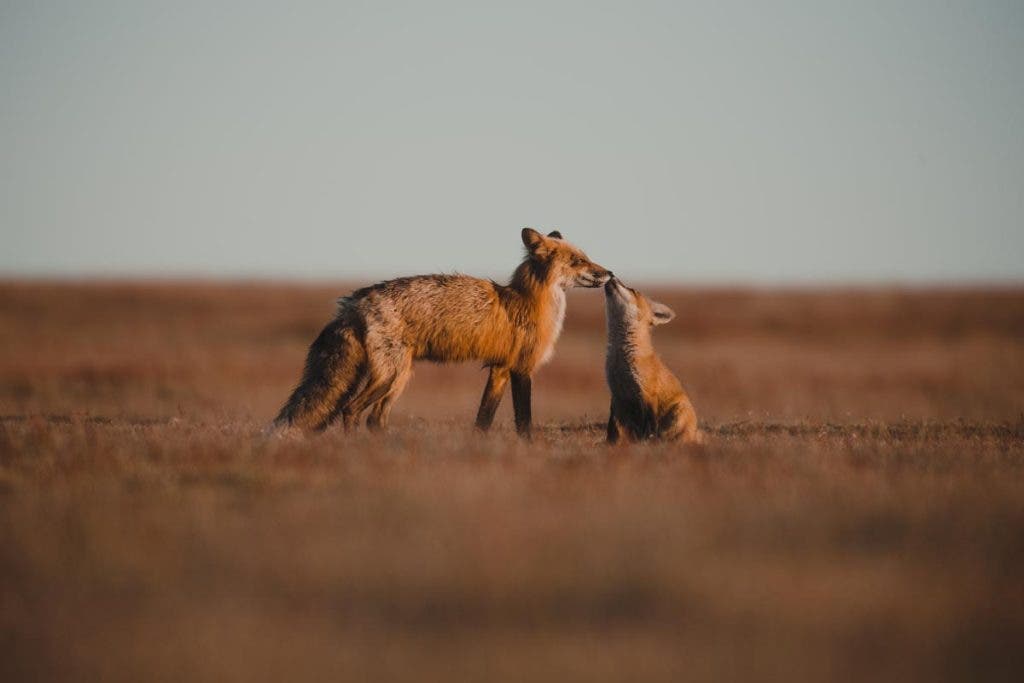
Photograph Foxes with Patience, Understanding, and Respect
While a firm understanding of the technical aspects of wildlife photography can help you nail your shot in camera, patience and a deep understanding of your subject can greatly assist in making truly memorable images that have a genuine impact on your audience. It took me years to not only locate this gorgeous family of foxes but to understand how I would like to document and portray my time amongst them as well.
The photos throughout this article were shot in a location that has since been closed due to rampant habitat incursions by visitors that led to total degradation of the ecosystem and forced the Foxes to abandon their dens that they had inhabited for years. They relocated to the local landmark that was referenced in the introduction paragraph, and current circumstances point to it being only a matter of time before the cycle repeats itself again.
I would advise on specific distances to keep between you and the wildlife that you are photographing, but it varies by each class of animal and local regulations supersede any information that I may impart in this article.
